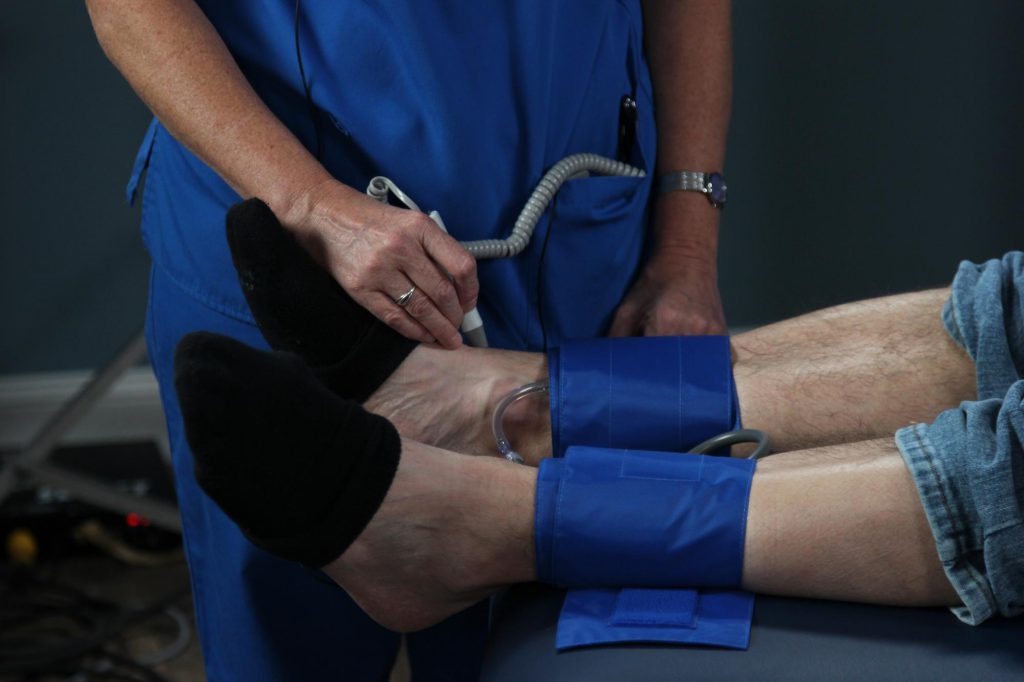
6 For Life Health Screening Assessment
6 For Life Health Screening Assessment uses a finger-stick blood test, along with blood pressure screening and other factors to predict your risk of developing 6 conditions: Heart disease, stroke, congestive heart failure, diabetes, Chronic Obstructive Pulmonary Disease (COPD), and lung cancer.
6 For Life Health Assessment Screening Details
6 for Life preventive health risk assessment test uses a finger-stick blood test and a scientific tool to predict your 5-year risk of developing six chronic conditions. It starts with a brief, one-page questionnaire about your health history and your lifestyle habits. Next, a simple finger-stick blood test measures your good and bad cholesterol and your glucose (sugar) levels. We also measure your blood pressure, your waist size, and calculate your body mass index.
This is all run through a predictive program based on more than 100 clinical studies, including the landmark Framingham Heart Study. The report provides a Risk Score (0 through 100) that will determine if the risk is Low, Moderate, High, or Very High. The report also outlines steps you can take to reduce your risk for developing these conditions.
The components include:
- Health risk assessment for stroke
- Health risk assessment for heart disease
- Health risk assessment for congestive heart failure
- Health risk assessment for diabetes
- Health risk assessment for COPD
- Health risk assessment for Lung Cancer
Modifiable vs Non-Modifiable Risk Factors
Modifiable risk factors are ones you can change. They are the ones you can take steps to reduce or eliminate from your overall risk factor profile. Modifiable risk factors include:
- A lack of physical exercise. Physical activity will increase your life span and supports your overall health.The World Heart Foundation says that more than 60% of the global population is not sufficiently active. They also report that even if you have risk factors, keeping active lowers your risk of premature death compared to those with no risk factors who don’t keep active.
- Tobacco use. Smoking damages the inside lining of the arteries, increasing the opportunity for fatty deposits to collect and create blockages. It also increases blood pressure and raises your cholesterol.
- Diet. This is an important risk factor that you can modify for the better. Avoiding saturated fat, reducing salt intake, eating fruits and veggies, as well as whole grains, can make a big impact on your overall health.
- All of these risk factors can impact your blood pressure, a key risk factor for stroke and cardiovascular disease.
Non-Modifiable Risk Factors
The big one here is family history. You can’t change your mother’s history or your father’s. If a first-degree female relative has suffered one before the age of 65, you are at greater risk of developing cardiovascular disease.
Age is another one. Risk rises as you age.
Gender. Men are more at-risk overall but once women pass menopause, a woman’s risk is similar to a man’s.
Socioeconomic status. Poverty leads to a lack of healthcare, stress, mental health problems, and an overall lack of resources is detrimental to health.
What this health risk assessment test doesn’t tell you.
It is important to note the limitations of this health risk assessment test. It does not tell you that you will, for sure, develop these conditions. It only gives you a measure of risk. It does not give you a prediction of risk over any specific time period, and since we do not image the heart itself, we are not providing any information on the presence or lack of atherosclerotic plaque in the coronary arteries. Showing a low risk score also does not mean that you won’t develop disease.
According to a study done by the U.S. Centers for Disease Control and Prevention, 80% of chronic diseases are preventable. You have to know where you are starting to map out where you need to go so consider a health screening assessment as your starting point.
Who is this health screening assessment for?
People who want to be proactive about their health and have relevant risk factors such as high blood pressure, high cholesterol, smoking, being overweight, and anyone with a family history of any vascular disease. It is a health risk assessment test, designed to point to certain risk factors that may lead to disease, although it doesn’t mean they will. The idea is that understanding your risk before something happens can allow you and your doctor to put preventive strategies in place.
Risk Factors for conditions monitored by 6 For Life
- Ages 21-80
- Obesity
- Diabetes
- High blood pressure
- High cholesterol
- Family history of heart disease
- Smoking, past or present
Ages
For ages 21-80
Frequency
Risk Factors for conditions monitored by 6 For Life
Schedule this Health Screening Assessment
*Screening availability may be limited by location.
Relevant Tests
1Seshadri S, Beiser A, Kelly-Hayes M, et al., The Lifetime Risk of Stroke: Estimates from the Framingham Study. Stroke, 2006; 37:345-350.
2Key risk factors include diabetes, obesity, age 55+, smoking (past or present), high blood pressure, high cholesterol, and a family history of stroke or heart disease.


